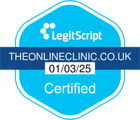Blood Lipids Profile
What are the components of this test?
The patient self-collect test focuses on the main lipids (fats) in the blood: cholesterol and triglycerides. It includes:
- Total cholesterol: includes all cholesterol in the blood. Cholesterol is a fat ingested in the diet and made in the liver. It is essential for building cells and for making some hormones, fat-soluble vitamins, and bile acids to aide digestion.
- High density lipoprotein (HDL)-cholesterol (known as 'good' cholesterol): takes excess LDL-cholesterol in the blood back to the liver for processing and elimination from the body.
- Low density lipoprotein (LDL)-cholesterol (known as 'bad' cholesterol): excess in the blood results in fatty deposits in the blood vessel walls.
- Total cholesterol:HDL-cholesterol: is calculated as 'total cholesterol value divided by HDL-cholesterol value'.
- Non-HDL-cholesterol: contains all 'bad' cholesterol types. It is calculated as 'total cholesterol value minus HDL-cholesterol value'.
- Triglycerides: a type of fat; if you eat more calories than you need, then they are converted into triglycerides and stored in fat cells until needed for energy.
Why is a Blood Lipid Test important?
Cholesterol and triglyceride levels can be used to assess the likely health of your arteries. Too much LDL-cholesterol can lead to its deposition on the walls of the arteries, forming plaques (fatty deposits). Plaques clog the arteries, which become thickened (a condition called atherosclerosis). The arteries become narrower, and restrict the flow of blood carrying oxygen and nutrients to the organ they supply. Over time, some of the plaque may break off and cause a blood clot. This causes in a heart attack if the blood clot lodges in an artery supplying the heart, or a stroke if the artery supplies the brain. Triglycerides can also contribute to the development of arteriosclerosis, and can be used as indicators of other disorders such as type 2 diabetes and low thyroid hormone levels.
Bile that is produced in the liver contains bile acids, cholesterol, among other fats and substances. Importantly, bile is a major means of eliminating excess cholesterol (in the form of bile acids) from the body. Bile flows via bile ducts into the gall bladder (for storage) or small intestine. Thus, disorders of the liver may cause levels of cholesterol/bile acids to increase in the body.
Who should monitor their blood lipids?
You should have your cholesterol levels checked if you have a high risk of heart disease, have heart disease, taking cholesterol-lowering medicines, or using other medicines that can affect liver function. Tests should also be carried out if there is a family history of liver disease or high cholesterol levels to determine if a condition has been passed on to the next generation.
How to test for blood lipids?
This test is provided to patients for self-collection of a blood sample from the side of the little finger. Test kits are supplied by The Online Clinic, and we will tell you where to send your sample for analysis in a business reply envelope. Test results are sent to one of our doctors, who will interpret your results for you.
Because you are unlikely to be experienced at collecting your own blood, it is important to carefully read the instructions provided in each kit. A sample of blood is collected after first washing your hands with soap and warm water, and drying them. Clean the selected area of the little finger using the swab, and dry thoroughly with a clean tissue. Take the lancet and remove the top; position the lancet on the selected skin area and press firmly to activate it. The skin is punctured and a drop of blood collects. This drop is wiped away with a clean tissue. Then, with the hand held downwards, the hand and finger are massaged to help the blood to flow, and the blood drops are collected in the collection tube up to the upper line on the tube (600 ml). If you have insufficient blood, wipe the finger with a dry tissue, which may encourage more drops to form. Otherwise, use another swab and lancet to puncture the skin on the other little finger. Once enough blood has been collected, cover the punctured skin with the plaster. Seal the blood collection tube with the cap, and carefully invert the tube 5-10 times. Finally, label the tube with your details and put it and the used lancet in the protective packing wallet provided.
What do blood lipid results indicate?
The results of your test are interpreted by a doctor and presented on your patient dashboard. Your total cholesterol:HDL-cholesterol ratio and levels of total cholesterol, LDL-cholesterol, non-HDL-cholesterol, and triglycerides should be kept as low as possible.
High cholesterol levels mean that you are at an increased risk of circulatory (blood vessel) disease and heart disease, such as heart attack, stroke, and vascular dementia. They are of even greater concern for people with heart disease or risk factors for heart disease, including smoking, being overweight, high blood pressure, and diabetes. High triglyceride levels often indicate other conditions such as obesity that increase the risk of heart disease and stroke, insulin-resistance (where control of blood sugar level is poor) that leads to diabetes, fatty liver disease (where too much fat is stored in the liver), and inflammation of the pancreas (pancreatitis).
What is a normal result?
For healthy adults, optimal test results for levels of cholesterol and triglycerides are:
- Total cholesterol: below 5.0 mmol/l
- HDL-cholesterol: above 1.0 mmol/l for a man and 1.2 mmol/l for a woman, ideally 1.5-1.6 mmol/L.
- LDL-cholesterol: below 3.0 mmol/l
- Total cholesterol:HDL-cholesterol ratio: below 5.0, optimum 3.5
- Non-HDL-cholesterol: below 4.0 mmol/l
- Triglycerides: below 1.7 mmol/l (after fasting) and below 2.3 mmol/l (if non-fasting)
GMC registration number: 4524038

Date: 27 March 2025
Next review: 26 March 2027
All UK registered doctors can have their registration checked on
The Medical Register at the GMC website.
Lipids Profile Test Reviews By Our Patients
-
Simple ordering and quick delivery. The instructions for taking blood sample were clear and detailed. Posted blood sample Monday afternoon and received online results evening of Wednesday. Impressed with whole process.
Related Pages
- All Diagnostic Tests»
- Calprotectin Test»
- Coeliac Disease Test»
- COVID-19 Tests»
- Diabetes Test»
- Ferritin Test»
- Follicle Stimulating Hormone Test»
- Free Testosterone Test»
- H. pylori Test»
- Iron including Total Iron-Binding Capacity Test»
- Iron Status Profile»
- Liver Function Test»
- Liver Function and Kidney Function Test»
- Quantitative Faecal Immunochemical Test»
- SHBG Test»
- Stool Microbiology Test»
- Thyroid Function Tests»
- Total Testosterone Test»
- Urine Chemistry Test»
- Vitamin B9 Test»
- Vitamin B12 Test»
- Vitamin D Test»
- Well Man Screen»
- Well Person Check Up»







